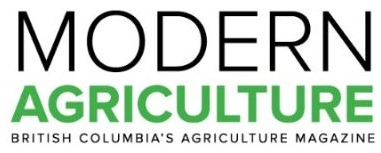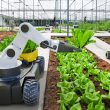words: Kaitlyn Gisler
Nedap has created a way for farmers to keep better track of their cows. Using sensors and a digital map, dairy farmers can now pinpoint the exact location of a specific cow within their barn.
Specializing in agricultural innovation for over thirty years, with locations worldwide, Nedap develops “technology that matters”; and, keeping ahead of the curve, develops solutions for issues that farmers haven’t seriously considered yet, but will have to in the near future.
Originally established in Groenlo, Netherlands, Nedap saw the opportunity to save farmer’s time in the barn looking for cows. Their dual Cow Positioning and Heat Detection System was launched to the public at Eurotier in 2012, an international renowned tradeshow in Germany dedicated to livestock and livestock innovations.
“…the selected cow’s position is updated as often as every five seconds and displayed back to the farmer via a personalized, digital map of their barn.”
The value of Nedap’s cow locator is becoming more relevant each year as herd sizes increase and more farms switch to voluntary, robotic milking systems. With robotic milking, cows are milked when they feel like it, as opposed to the entire herd being brought forward two or three times a day for milking with a traditional parlour. Consequently, robotic milking—although beneficial for the cow and the farmer—means farmers spend more time in the barn looking for specific cows that might need individual treatment or attention. At any time a cow can be in the robot milking, laying down, or eating at the feed bunk—amongst her other black and white counterparts—it can sometimes feel like finding a needle in a haystack.
Nedap’s system involves specialized neck tags, or collars, worn by the cows (all dairy cows already wear collars for identification). The specialized neck tags provide information on a cow’s activity and health, but can now also provide their location. This addition still only requires a single tag and no previously provided information is lost in place of knowing where the cow is within the barn.
Beacons are placed in the barn at permanent locations and a study done by a Netherland university found that the maximum distance between beacons should be 25 metres. A greater distance can affect their accuracy when locating a cow. Using low frequency signals, the beacons connect to the cow’s label and then send information to a processing unit. The processor then determines the cow’s location based on the signal strengths submitted by the beacons to narrow down where the cow is in the barn. Finally, this information is sent to a computer or mobile device (of the farmer’s choice) showing the time when the last location was determined. Taking into consideration that animals are usually on the move, the selected cow’s position is updated as often as every five seconds and displayed back to the farmer via a personalized, digital map of their barn.
In the study, there were only a couple of issues with Nedap’s system. Metal walls and roller doors—fixtures on some farms—can interfere with signals, and the number of beacons in relationship to the size of the barn can also affect accuracy. The placement of the tags on the collar had no effect on the exactness of the locator. However, the animal’s movement can tamper with how precise the locator is: a cow that is running or walking from point A to B will have different accuracy than a cow that is resting. Based on the study, this system can pinpoint the cow’s location within zero to 0.75 metres when in the barn.
Nedap does not directly distribute its products to Canada (but is heavily established across Europe and Asia) although some Canadian farm suppliers do carry their products. Nedap also has an informative website detailing its numerous livestock innovations (http://en.nedap-livestockmanagement.com) but be careful, their website is teeming with inventive ideas—it may be hard to keep track of them all.












